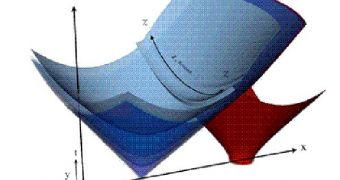It has become widely accepted among scientists that our Universe is roughly 13.7 billion years old. It's also known that the diameter of the observable Universe measures at least 93 billion light-years. However, if this is true, there is a hitch. In 13.7 billion light-years, light can only travel 13.7 billion light-years, so astrophysicists have to ask how come the Cosmos grew to such impressive sizes. One possible explanation for this is inflation, a mysterious process that made the Universe grow by several orders of magnitude at once during its first moments, Technology Review reports.
But introducing inflation into the equation only fixes half of the problem. While the phenomenon would indeed explain the expansion part of the Universe, it would also have to be explained itself. What caused inflation to occur, and, most importantly, what caused it to stop? How come the Universe is no longer expanding at exponential rates, but only at an ever-accelerating speed, determined by Hubble's constant (which is still unknown)?
Some astrophysicists have proposed a daring answer to the expansion question. They argue that the Universe itself is still expanding exponentially, but that we are located inside a cosmic bubble of sorts, in which stability settled. Naturally, they say, ours is just one in an ocean of such bubbles, spread throughout the vast reaches of the Cosmos. Under this scenario, however, it would be extremely difficult for us to observe other such bubbles, as they would be located outside the visible Universe.
Now, scientist Anthony Aguirre, from the University of California in Santa Cruz (UCSC), and California Institute of Technology (Caltech) expert Matthew Johnson believe they may have found an explanation of sorts for this. They argue that we could only detect such a bubble if it collided with our own in the distant past. The problem is that, if such a collision indeed occurred, space-time in both bubbles would be destroyed, and no one could obviously measure or remember anything.
They argue that the marks of such a collision could, however, have remained in the Cosmic Microwave Background (CMB), the ancient radiation that has glowed in the Universe since the Big Bang. Astronomers also call it the residual light of the first explosion that sprung everything into being. The two scientists argue that the CMB would preserve some symmetric features that would hint at cosmic-bubble collisions, if experts knew where to look.
Thy also say that modern telescopes, such as the European Space Agency's Planck, could hypothetically observe these marks, as they are sensitive enough to discover any variation, however small, in the fabric of the CMB. “With some luck, the discovery of 'other universes,' a concept seemingly out of science fiction, may be just around the corner!” the two conclude.

 14 DAY TRIAL //
14 DAY TRIAL //